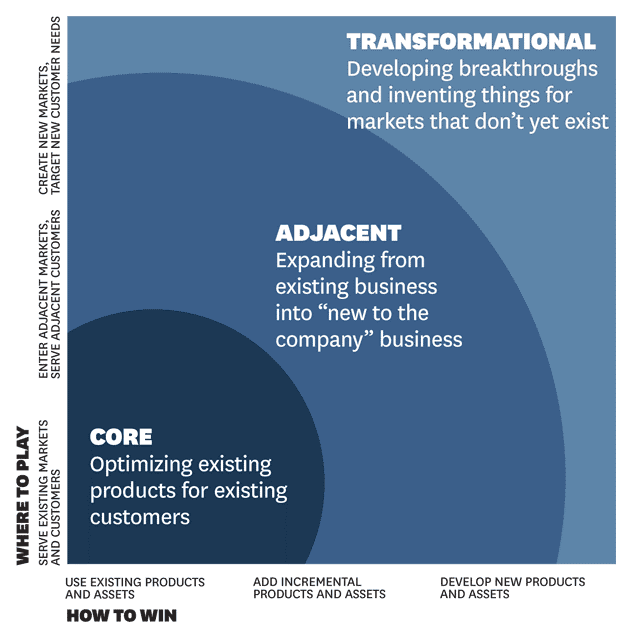
Von Zeynep Erden
Innovation is the process of creating value from ideas. The value can be both commercial and social. The objective of innovation in healthcare boils down to two things: providing better and cheaper healthcare. Any type of positive change, simple as decreasing waiting times of patients or complex as CRISPR technology, that improves health outcomes and patient experiences is a healthcare innovation.
The healthcare sector is facing many large challenges, such as increasing healthcare costs, tighter regulations, privacy concerns, slow pace of digital transformation, etc. To overcome these challenges, healthcare organizations and professionals are turning to innovations. It is clear that organizations that cannot renew themselves and miss the market trends will become obsolete in the future. Therefore, healthcare organizations should foster innovation to develop smarter, cheaper, and better healthcare delivery, before it is too late. Leaders who want to foster innovation in their organizations should start by asking the following three questions. In future blogs, I will focus on other questions that organizations should continue to ask.
Q1- What is our innovation ambition? What is the job to be done?
Organizations in the healthcare sector need to understand their current situation and ask the question of “where they want to be in the future”. According to their visioned role in the future of health and their current competencies, they need to set their core, adjacent, and transformational innovation ambitions. Nagji and Tuff (2012) have developed a seminal tool that organizations can use to define their innovation ambition. It is called “the innovation ambition matrix” (See Figure 1). As there are many different organizations and entities in the healthcare sector, the scope of the concept of “customer” in the Figure can be conceived as wider than its economic connotation.

After analyzing where the sector is moving to (1), identifying where they play and how they operate right now (2), and deciding on what role they want to play in the future (3), organizations can identify the technology, talent, and operational gaps that can be addressed via different innovation initiatives. An important point to consider while identifying these gaps is to answer the question of “what is the job to be done” in each gap. Leaders should carefully identify the customers’, patients’, policymakers’, employees’ jobs to be done before identifying what innovation initiative they engage in.
For example, when we think of innovation in healthcare, the first thing that comes to our mind is the potential that digital technologies and digital transformation offer. Although it is simple and logical, many organizations ignore the fact that digitalization is not an end, but rather, one of the means that help organizations to achieve their innovation ambitions. However, many organizations tend to become captivated by the fascinating advances in technology and jump onto it without even thinking about “what job to be done”. Therefore, before engaging in any innovation initiative, leaders should deeply understand the unmet need of the target audience.
Once organizations define their innovation ambition they should focus on the next question.
Q-2- Do we have a balanced portfolio of innovation initiatives? What should we include and exclude in our innovation portfolio?
Given that each organization has limited time and resources, they should prioritize the innovation initiatives they can potentially invest in. They should choose the ones that enable them to preserve and improve their current activities in the core while making sure that they also invest in initiatives that will create value in the future and prepare them to survive in the long run. In this regard, they should become ambidextrous in balancing their exploitation and exploration activities. If they ignore investing in their core activities, they will not be able to secure the cashflows needed for investing in transformational activities whose benefits can be realized over a long period. In contrast, if they focus only on improving their core activities that provide positive cash flows, they risk staying relevant and competitive in the long run. Once they make sure that they have a balanced portfolio of innovation initiatives (projects) they should think about how to implement them. While making the implementation plans they should ask the following question.
Q3- How should we implement each innovation initiative: alone or with others?
Once organizations identify the job to be done and the corresponding innovation initiative, they need to think about how they can realize and implement it. Most innovations in healthcare are co-created by different organizations (technology providers, care providers, insurance companies, policymakers, pharma companies, etc.) in the health ecosystem. Most of the advancements in the ecosystem are driven by big technology players like Amazon and small startups which leverage their core competencies in the intersection of innovation and health. Those players are likely to disrupt the way existing incumbents in the health sector work. Organizations that survive will be the ones that are capable of changing and renewing themselves.
Disruption in the healthcare sector, as in most other sectors, is inevitable. Therefore organizations must embrace disruption and stay relevant in the long run. The question that incumbents in the healthcare sector like the hospitals, medical device companies, and pharmaceutical companies should ask is what they can do to embrace disruption. Research shows that the following two strategies can help companies to foster their innovation capabilities. First, big organizations can create separate sub-structures which are more agile and can focus on R&D. This can be realized in many different ways such as distinguishing between the teams that work on innovative projects vs operational tasks, creating innovation departments/labs, having sister companies which focus on innovation projects, etc. Second, organizations can foster open innovation and collaborate with external parties like universities, startups, technology companies, etc. to increase their innovative capabilities. Those two strategies can be combined as well.
We can help you in your innovation journey!
Innovation remains quite new and challenging for many healthcare organizations. It is not an easy task, needs special focus, and is likely to fail easily if the innovation strategy is not well defined and integrated into the overall strategy of the organization. Those questions that I listed here are important to start with while developing your innovation strategy. If you want to learn more about developing and implementing innovation strategies in healthcare organizations do not hesitate to contact us. We can support you with our expertise, which is informed by the latest research findings in the fields of innovation management and healthcare management.
Zeynep Erden Özkol is lecturer in the team Healthcare Management at Winterthur Institute of Health Economics.